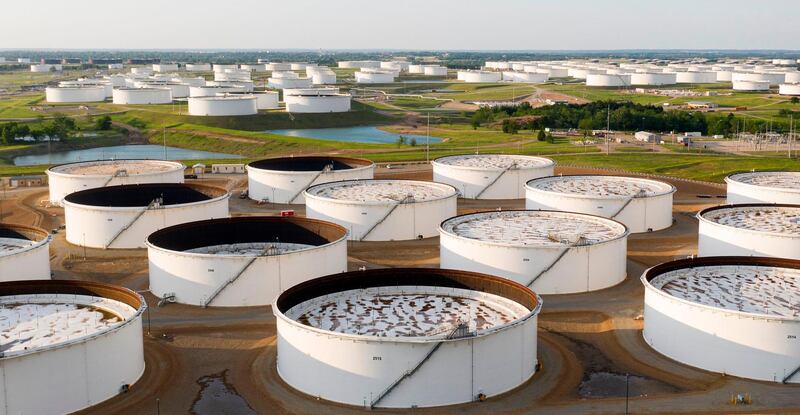US crude prices rose above $43 per barrel during trading on Wednesday as inventories in the world’s largest oil producer continued to fall.
West Texas Intermediate, which tracks key US crude grades was up 0.58 per cent to trade at $43.01 per barrel at 3.09pm UAE time. Brent, the international benchmark was up 0.66 per cent trading at $45.88 per barrel.
The American Petroleum Institute, an industry-funded group that publishes weekly inventory data, is likely to report a withdrawal of oil stocks by 6.36 million barrels last week, according to analyst forecasts. The withdrawal, if confirmed, would mark the longest streak of inventory declines this year.
Prices also gained from tightness in the markets last week after two tropical storms shut in around 1 million barrels per day of oil and 1.2 billion cubic feet of gas per day from the Gulf of Mexico.
WTI gained 5.8 per cent in August, while Brent rose 4.6 per cent, according to MUFG Bank. Oil’s rally comes amid "tightening fundamentals, a weaker US dollar and the risk-on macro backdrop”, said Ehsan Khoman, head of Mena research and strategy at the bank.
The bank forecasts prices will range on the upside.
“The front-end is racing ahead of our initial expectations as we had anticipated some pullback during the summer months, given the pace of the demand recovery is easing and the large inventory overhang still requires time and patience to clear,” he said in a note on Wednesday.
US crude prices, which plunged below zero in April over concerns of a storage shortage as the benchmark’s May contract was expiring, have since made a decent recovery. Cuts by the Opec+ alliance of producers and reviving consumer demand for crude as lockdown measures have eased helped to steady prices.
“Opec's August production numbers showed a more modest increase than was expected as both Iraq and Nigeria delivered cuts to make up for failing to hit targets earlier in the year,” Emirates NBD said in a note on Wednesday.
The group scaled back an historic 9.7m bpd of cuts in place for three months to 7.7m bpd from August onwards.
Under the new terms, total output was up by 550,000 bpd month-on-month, with production from Saudi Arabia rising by 410,000 bpd and the UAE by 200,000 bpd.








